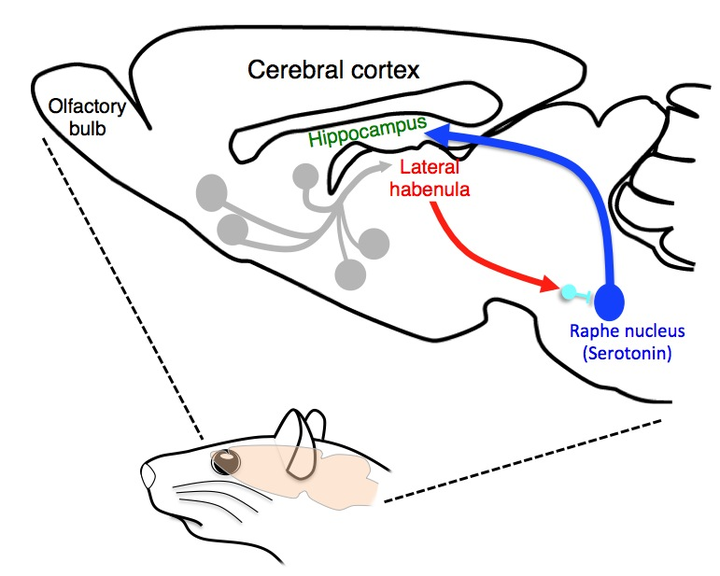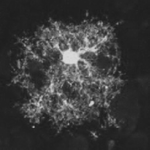Habenula Project
 Image by Neurobiol@Hiroshima
Image by Neurobiol@Hiroshima
Development of the animal model for depression
The habenula is a diencephalic nucleus regulating monoamines such as dopamine and serotonin. We recently found that pathological activation of the habenula led the mice to show depressive-like behaviors under acute and chronic stress. Analyses revealed that mice with hyperactivated habenula showed reduction in the number of c-Fos positive cells in the brain stem nuclei producing the serotonin and dopamine, indicating that activation of those monoaminergic neurons was reduced upon activation of the habenula. Thus, our working hypothesis is that habenular activation elicits depressive-like behaviors by way of modulating monoaminergic activities.
See details in the recent post.
Origin of the astrocytes inducing depressive-like behaviors
A novel gene Pcsk5 causing depressive-like behaviors

